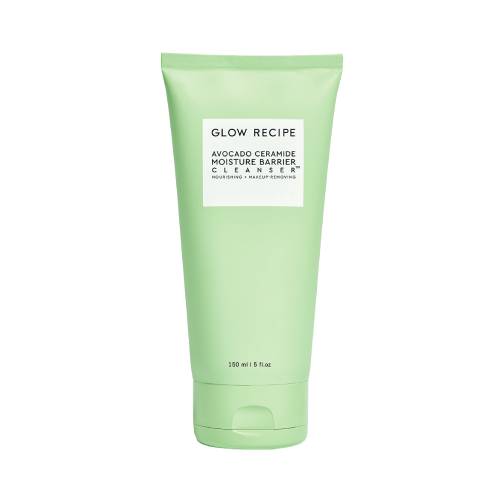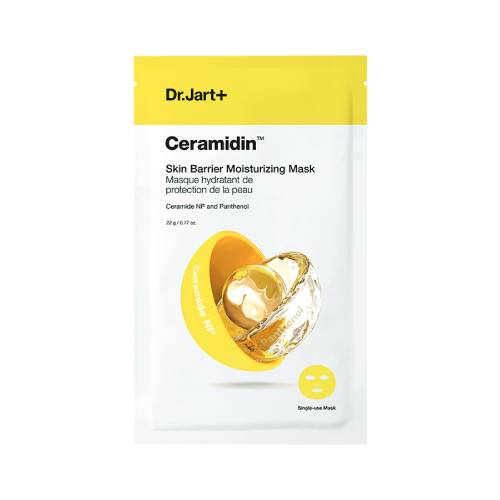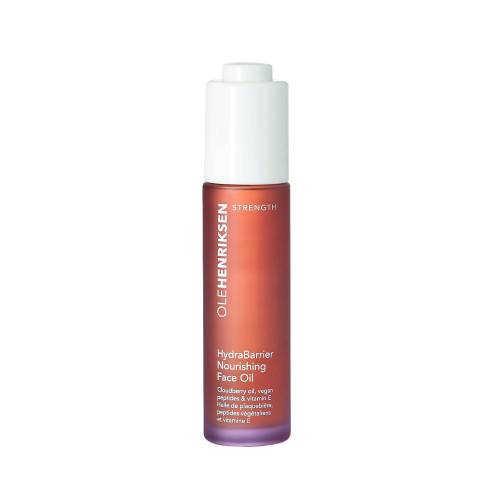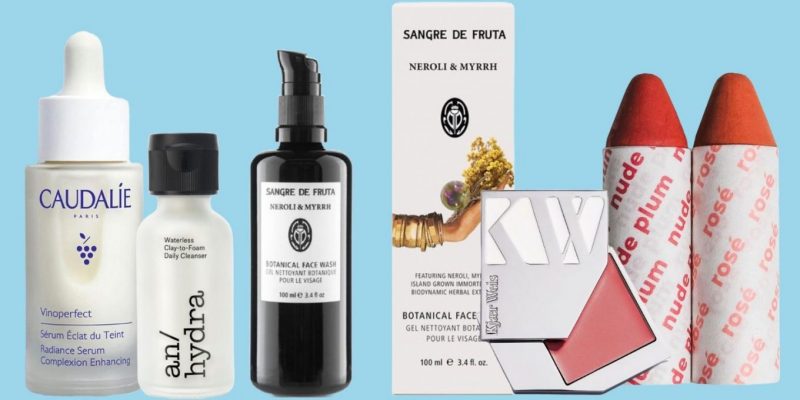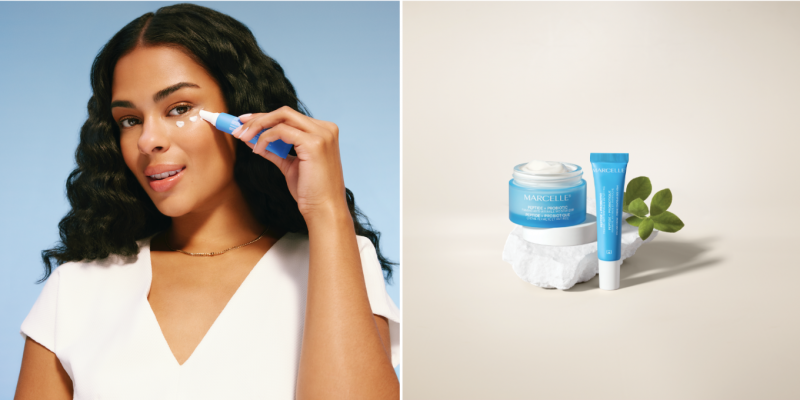Skincare
Every item on this page was chosen by an ELLE Canada writer. We may earn commission on some of the items you choose to buy.
Here’s What to Do When Your Skin Starts Changing
It’s normal for skin to change at different stages of life, but what happens when your regular routine starts to do more harm than good?
by : Patricia Karounos- May 3rd, 2023

Collage: Anne-Sophie Perreault
For as long as I can remember, my skin has been the same: frustratingly acne-prone with an oilier-than-I’d-like T-zone and semi-frequent dry patches on my cheeks. Then, about a year ago, that all changed. Suddenly, I was experiencing redness, tightness and flakiness like never before. It was a stressful period in my life, so I figured that that was what my skin was reacting to—until I started feeling some tingling, a clear sign of a sensitized and damaged skin barrier.
Guessing that I had been a bit overzealous while exfoliating, I removed all active ingredients from my skincare routine and resolved to spend the next couple of weeks sticking only to the basics: a gentle cleanser and a nourishing moisturizer as well as an SPF during the day. I thought this would cure all my ails and I’d soon be able to reintroduce oft-discussed ingredients like glow-imparting vitamin C and skin-cell-turnover-boosting retinoids into my meticulous regimen.
I was wrong. Sure, the irritation did fade, but the dryness remained—no matter how many purportedly-ultra-hydrating products I tried. After months of denial, it was finally time to accept reality: My skin had changed, and the routine I’d been using no longer worked for me. “Skin does get drier and drier, and there are a lot of reasons it can change over time,” says Dr. Geeta Yadav, a board-certified dermatologist and the founder of Toronto clinic Facet Dermatology. Hormones play a role—the skin of menstruating people is quite different from that of those who are menopausal or post-menopausal—as do other factors that naturally come with age, such as the loss of collagen and elasticity, which make skin appear plump and keep it from sagging.
External factors can also wreak havoc on your skin barrier, says Dr. Renita Ahluwalia, lead dermatologist at the Canadian Dermatology Centre in Toronto. Overexfoliating can cause irritation, as can seasonal changes. “In our climate, the seasons change very quickly, and it’s hard to keep up with that,” she says. “Your body is smart—it tries to protect you, but it takes time to adapt naturally. If you aren’t keeping up with those changes and the requirements are changing very quickly, then your skin barrier can be disrupted.” So when we go through winters where temperatures fluctuate—going, say, well below 0°C one day and nearing 10°C the next—your skin can really suffer.
It’s also important to remember that as you age and your skin changes, the unexpected is really not so, well, unexpected. Ahluwalia suspects that my skin stayed dry because it was never fully able to recover from the accidental damage I had inflicted upon my barrier like it would have if I were still in my early 20s. Yadav adds that it’s not uncommon to develop an intolerance to products you’ve used before—continuously applying formulas with potential allergens (beeswax, for instance) to a compromised barrier increases your risk of a reaction, making it difficult to get out of the irritation cycle.
Ultimately, it’s important to listen to what your skin is telling you. If it’s merely irritated, you should be able to expect it to return to “normal”—whatever that may be for you. But if the change is persistent, it’s time to adapt. “People tell me, ‘I haven’t done anything different’ or ‘I’ve never had this happen to me before,’” says Yadav. “It’s kind of like high blood pressure— you’re not born with it, but it can happen to people at some point. The same thing can be true of your skin.”
If, like me, you are confused about caring for your changed skin, here are three approaches recommended by Ahluwalia and Yadav.
Get back to the basics
Both derms agree that when you suspect that you’ve damaged your skin barrier, you need to stick to a minimalist skincare routine for the time being. Yadav suggests following the product-elimination diet from Dr. Sandy Skotnicki (a fellow Canadian dermatologist); it entails cutting out all products— including things like retinol and harsh physical exfoliants—until you’re feeling better and then slowly reintroducing them one at a time, giving your skin a week or two to adjust to each newly added product, until you pinpoint the culprit. And when your routine is more rounded out once again, both derms say you should prioritize hydration by using a combination of a humectant (something like hyaluronic acid or glycerine, both of which draw water to the skin) and a rich emollient with good-for-you ingredients like fatty acids and ceramides, which replenish the barrier.
Make small tweaks
If your skin isn’t responding to your routine the way it used to, you may have to edit it to include gentler products. “Try going from a gel cleanser to a cream cleanser if dryness is your main issue,” says Yadav. “Instead of a prescription retinoid, move to an over-the-counter retinol. Or maybe you can’t tolerate one at all. Those things can all exacerbate dryness or irritation.” Ahluwalia also recommends looking at the pH level of the products you use—our skin naturally has a pH of 5.5, but many formulas are far more basic or acidic, which means they can be quite stripping, especially if your barrier is already damaged.
Take a seasonal approach
The weather may vary, but we have a decent idea of when it will start to change each year, and you should be prepping your skin for those changes, says Ahluwalia. “Leading up to winter, increase hydration; when it starts to get warmer, you may be able to cut back a little bit and focus on a good vitamin-C serum, which will protect your skin. And make sure you use a good SPF all year round.” Yadav adds that the warmer months may be a better time to use more potent, drying ingredients like retinol because the extra humidity in the air will help you out.
Newsletter
Join our mailing list for the latest and biggest in fashion trends, beauty, culture and celebrity.
More from Skincare
Read Next
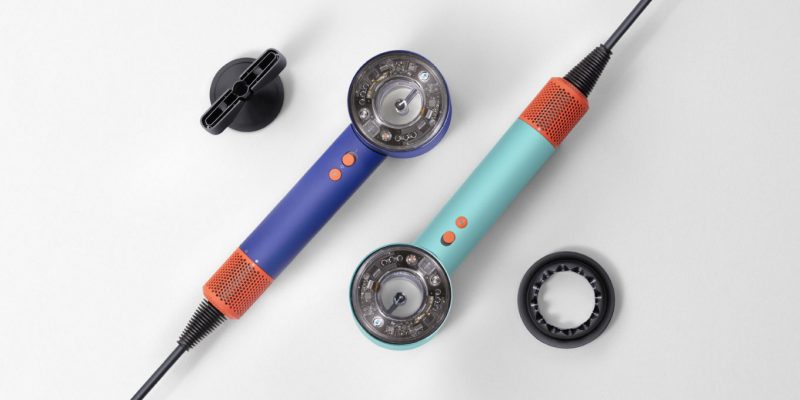
Beauty
Dyson Just Launched Its Most Intelligent Hair Dryer Yet
Get ready to upgrade your blowout game.
by : Lauren Knowles- Apr 25th, 2024

Fashion
Meredith Shaw Created a Plus-Size Summer Dress Collection That "Feels Like Candy"
The morning show host joined forces with PENN. to create a curated collection for sizes 14-32.
by : Allie Turner- Apr 25th, 2024

Beauty
Summer Prep: How to Feel Confident in Your Swimsuit
New Size-Inclusive Swimwear: Gillette Venus partners with The Saltwater Collective to Launch a Collection for Any Body
by : ELLE Canada- Apr 24th, 2024

